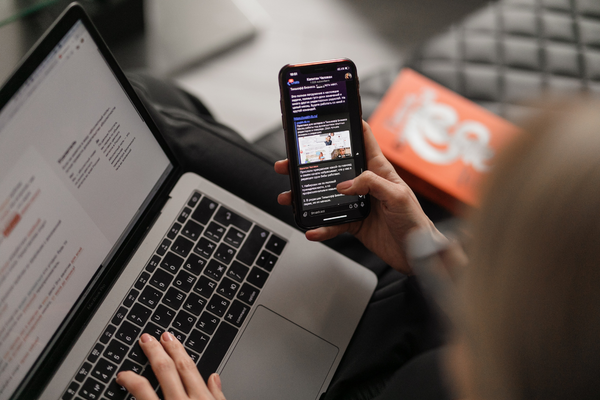If you want people to learn, keep it snappy. Many studies have proven this, and in the past few years microlearning has become one of the hottest topics in Learning & Development.
This is because modern learners have short attention spans and busy schedules - they value quick, actionable tips over lengthy courses.
If you’re building your business’s L&D program in 2022 you probably already see the value of microlearning (if not - check this out !). But what are some strategies for implementing microlearning?
Here are 6 ways we recommend you use microlearning in your organisation. These microlearning strategies will help you build L&D programs that are cost-effective and engaging!
- Make it on demand
- Scenario-based Microlearning
- Make it gamified
- Use spaced repetition
- Keep up continuous learning
- Difficulty-based learning
1. Make it on demand
One of the major benefits of microlearning is that it is more time-efficient than traditional corporate learning. This is for obvious reasons - it’s shorter!
But the length of traditional courses isn’t their only inconvenient aspect - getting everyone together at the same place and time can also be a bit of a nightmare in busy, fast-growing businesses, especially ones that are client or customer-facing.
The beauty of microlearning is that everyone can slot it in at a time that suits them. If you implement a microlearning program, take advantage of its short-form nature by making your content available on-demand.
What does this look like in reality? Here are a few examples:
- If you’re teaching through short articles/written content, give everyone a reasonable period of time to read it in (for example, a week, rather than an afternoon) so that people can give it their full attention at a convenient time for them.
- If you’re doing short-form in-person training sessions, try recording them as a webinar for people to watch in their own time.
- If you use short-form video content, use a microlearning platform that allows your people to access and share lessons conveniently and on-demand
2. Scenario-based microlearning
Scenario-based learning or SBL is one of the oldest and best tricks in the L&D book. It’s been a favourite for decades, and there are still studies coming out now that prove just how valuable it can be.
Scenarios can also be applied as part of a microlearning strategy - with some key differences. If you’re going down the asynchronous, on-demand route, group role plays aren’t going to be an option.
Here are a few ways to take an SBL approach to your microlearning:
a. Use scenario-based quizzes
Quizzes are an excellent way to cement knowledge (more on that below!). They can also be used to bring scenarios into your learning. When learners see the applied value of their learnings, they are more likely to feel engaged. So, ask questions that will allow them to see how their new knowledge can apply to their own work.
b. Use stories
People remember stories better than they remember data. If you’re creating a series of microlessons, planning them within a narrative flow is a great way to keep people thinking about how to apply their knowledge. This strategy can be seen in video game design - games that make their onboarding tutorial part of the flow of the story see much higher tutorial completion rates.
c. Encourage transfer of knowledge
‘Transfer of Knowledge’ is the idea that learners remember new concepts best when they apply it in several different contexts. Abstract theories are harder to remember than real-world applications - so try to get your learners to transfer their knowledge by giving multiple contexts in which that knowledge might be applied.
3. Make it gamified
Gamification is the Robin to microlearning’s Batman - it’s the perfect sidekick. Gamified learning is proven to have a huge effect on learner engagement, and it works best when the lessons are short, snappy and fun.
The reason microlearning is well-suited to this is the spacing. You can create much more exciting competition within a group when you’re taking on nine ten-minute sessions, than when you’re doing a single 90-minute session.
There are several ways you can create gamified experiences in your learning program:
a. Leaderboards
Adding a bit of light competition can be a great way to incentivise learning. Monthly or weekly leaderboards to track the best performers are a fun way to keep learners engaged
b. Streaks
Daily, short-form learning is more effective than less regular, longer-form options. Recording daily streaks is a great way to incentivise people to keep improving every single day.
c. Prizes
Everyone loves a prize - small gifts or charity donations can be surprisingly motivating for learners.
d. Quizzes
Adding a quiz makes learning both more engaging and more memorable. Not to mention - more fun!
4. Use spaced repetition
One of the most groundbreaking discoveries in the history of pedagogy was made by Herman Ebbinghaus, who discovered the ‘Ebbinghaus Forgetting Curve’.
Ebbinghaus found that the cognitive patterns developed when you initially learn something will vanish almost entirely within a month. 50% of what you learned will be gone within a day, and 90% will be gone within 30 days, on average.
Ebbinghaus’s study is over one hundred years old, but remains widely cited as one of the most important studies of learner memory ever published.
How do we conquer the forgetting curve? The answer is in ‘Spaced Repetition’. Since an individual learning event is likely to be forgotten a month later, you’re better off taking a ‘little and often’ approach. Keep learning in small doses every day, and the cognitive pathways needed to commit material to long-term memory will develop gradually.
5. Keep up continuous learning
Spaced repetition works well for committing specific concepts to memory, but if you want to create an ongoing learning culture, you need to consider continuous learning.
Continuous learning means learning forever - there’s always more to learn! Rather than specifying specific, time-bound modules and pathways to your teams, learning should be thought of as something that is always ongoing in the background.
Microlearning is well-adapted to this - if you are to encourage people to stay engaged over a long period of time, your best bet is to make sure that the materials available are short and to-the-point.
If learners are learning every day, it’s OK - more than OK, in fact! - for them to learn just one thing daily. Microlearning materials that aim to teach just one small but important piece of information each day.
6. Difficulty-based learning
Microlearning is much more suited to allowing learners to progress through progressive levels of learning than their long-form counterparts.
This is because when you’ve got a large library of short-form content it’s possible to be more granular with the level of an individual learner. Learners can rate their own skill in something first and be provided with a wealth of materials that are just right for their level.
The short-form lessons can then allow learners to progress at their own pace - if they feel it’s too easy to begin with, it’s easy to start training them with more complex stuff. This is as opposed to long-form training, where if they start an hour-long course that’s not at their level, they don’t have many options!
Related to this difficulty progression is the granular metrics that companies can gain from a microlearning program. When learners are completing short, regular lessons with progressive difficulty, organisations can track their progress in a much more detailed way.
Conclusion
With microlearning, businesses can see each individual module that their learners have completed, and gain a deeper understanding of the skills gaps and development needs of their teams as a result.
So there we have 6 microlearning strategies that should help you roll out microlearning in your business. We recommend taking inspiration from all of these when you execute your own microlearning strategy.
If you agree, take a look at 5Mins, the learning experience (LXP) platform that will do all of the above for you!




